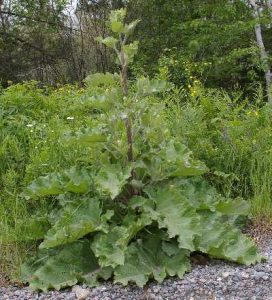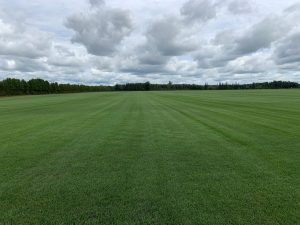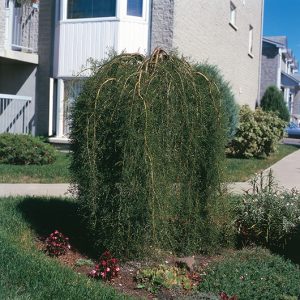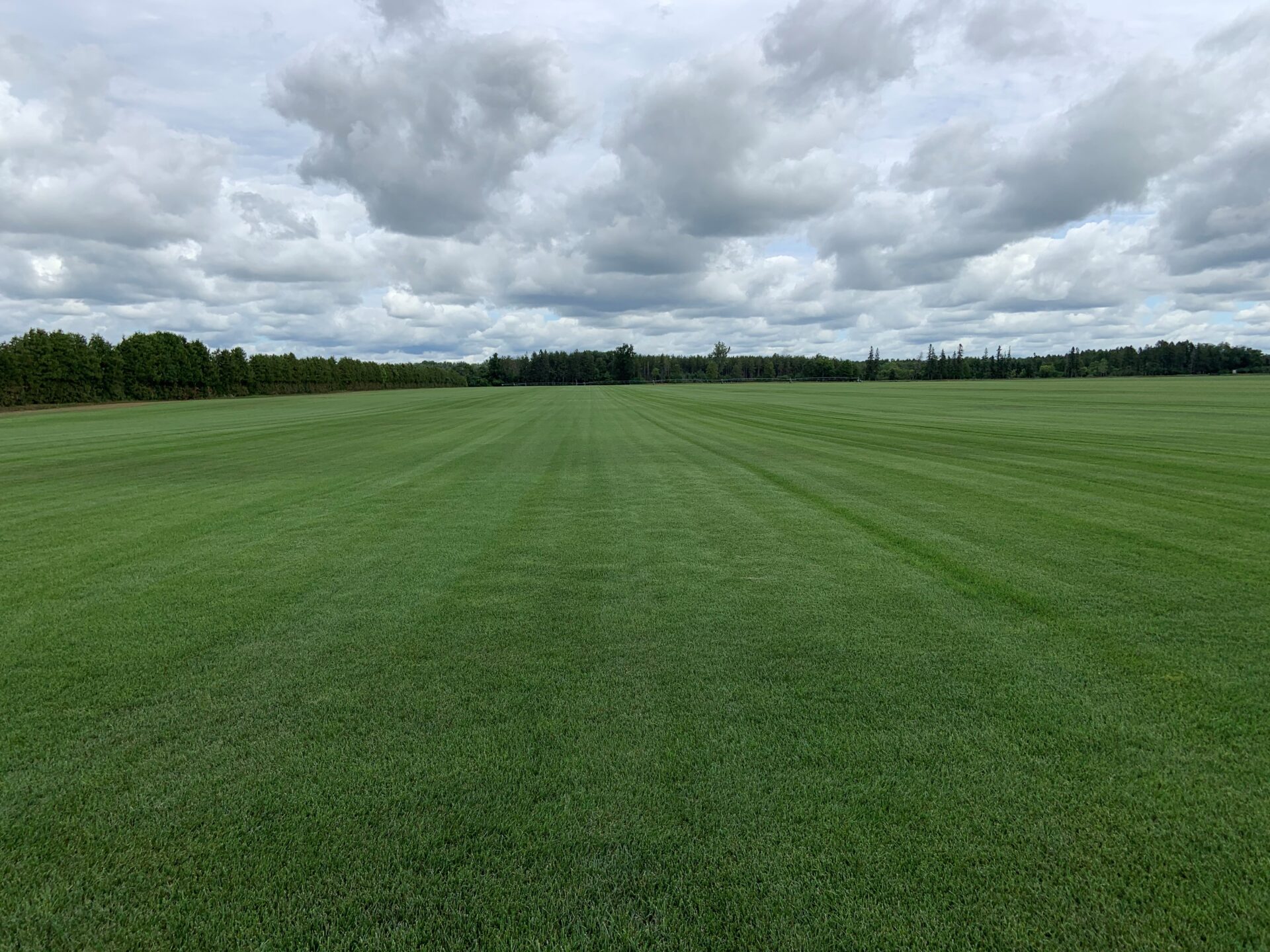
Hi, Dave here from Foxy Gardens in southwestern Ontario, Canada. Kentucky Bluegrass (KBG) is one of the most beloved cool-season grasses in North America, especially in Ontario, where its lush green appearance and self-repairing nature make it a favorite among homeowners.

But while KBG thrives in full sun, many Ontarians find themselves wrestling with shaded lawns. Trees, fences, and north-facing yards can limit sunlight to just a few hours a day.
So, is it still possible to enjoy the beauty of a bluegrass lawn under these conditions? The answer lies in choosing the right cultivar.
What Is a Cultivar, and Why Does It Matter?
A cultivar is short for “cultivated variety” — a plant that has been selectively bred for specific traits. In the case of KBG, all cultivars belong to the species Poa pratensis, but individual cultivars can vary widely in performance. Some are bred for disease resistance, some for color, and others for drought tolerance.
And yes, some are bred to handle shade better than others.
Choosing the right KBG cultivar means tailoring your lawn to the microclimate of your yard. If you’ve got shade, you’ll want a cultivar that won’t wither in low light.
Why KBG Struggles in Shade
KBG prefers 6 to 8 hours of direct sunlight per day. In shady conditions, its ability to photosynthesize is restricted. This leads to sparse growth, poor root development, and increased vulnerability to pests and disease. Moisture that lingers in shaded areas can also promote fungal issues, especially in Ontario’s humid summers.
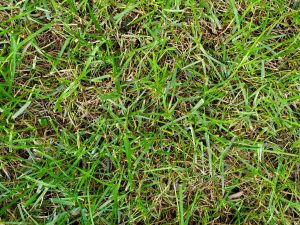
Even so-called “shade-tolerant” KBG cultivars still need some sun. Most do best with at least 4 hours of filtered or direct light daily. If you have full shade all day, you may want to consider a different grass type altogether (like fine fescues).
The Best KBG Cultivars for Shade in Ontario
Let’s explore some of the best Kentucky Bluegrass cultivars for partial-shade lawns in Ontario’s climate zones (primarily 5a to 6b).
Mazama
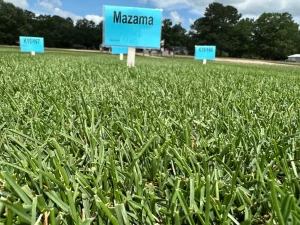
Mazama is a newer cultivar bred by Rutgers University. It has quickly become a favorite in the lawncare community, especially among those dealing with shade.
- Performs well with 4 to 6 hours of sunlight
- Dark green, fine-bladed appearance
- Excellent disease resistance
- Strong performance in humid summer conditions (perfect for southern Ontario)
Homeowners in Zone 7a and similar Ontario regions report that Mazama thrives where other KBG cultivars fail. However, it still struggles in full shade (e.g., beneath dense trees).
Bewitched

Bewitched is another top-tier shade-tolerant cultivar. It’s prized for both its appearance and hardiness.
- Deep green color with fine texture
- Cold-hardy – great for Ontario’s freezing winters
- Grows well in as little as 4 hours of sunlight
- Popular in elite seed blends for shady lawns
Many lawn professionals recommend mixing Bewitched with other cultivars to improve overall performance.
Midnight-type Cultivars (e.g., Bluebank)
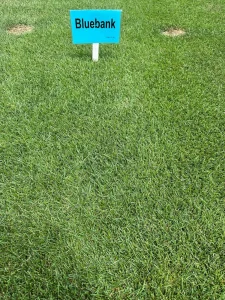
These are not bred specifically for shade but are included in blends for durability and deep color.
- Dense, dark green turf
- Low vertical growth habit
- Adds variety and disease resistance when blended with Mazama or Bewitched
Examples include Midnight, Bluebank, and Moonlight SLT.
Other Notables: Prosperity, America, and More
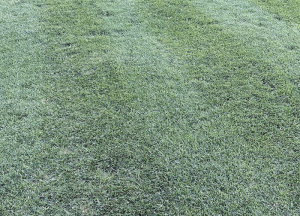
Prosperity and America are cultivars with moderate shade tolerance and are often used in commercial lawn mixes. They’re not as shade-adapted as Mazama or Bewitched, but they provide balance in blends.
Should You Blend Cultivars?
Yes. Using a blend instead of a single cultivar (monostand) gives your lawn greater genetic diversity. This improves resistance to disease, insects, and varying light levels.
A recommended shade-tolerant KBG blend for Ontario might include:
- Mazama (core performer in light shade)
- Bewitched (color, cold tolerance, shade ability)
- Bluebank or another Midnight-type (density and resilience)
Blends also reduce the risk of total lawn failure due to a single cultivar’s weakness.
Tips for Growing KBG in Shade in Ontario
Once you have the right seed, proper lawncare makes all the difference:
- Fall is best for seeding: Aim for late August to early September.
- Improve sunlight penetration: Trim tree branches where possible.
- Aerate your lawn: Helps roots grow deeper and stronger.
- Don’t over-fertilize: Shaded grass grows slower and needs less nitrogen.
- Mow higher (3” or more): Taller blades capture more light.
- Water deeply but less frequently: Let the roots reach downward.
- Use a disease-resistant cultivar: Shade creates moisture traps; prevention is key.
Can You Mix KBG with Other Grasses for Shade?
Absolutely. For lawns with <4 hours of sun, even the best KBG cultivars will struggle. In these areas, mixing in:
- Fine Fescue (e.g., creeping red fescue)
- Turf-Type Tall Fescue (TTTF) can yield much better results.
These grasses have better natural shade tolerance and can coexist well with KBG.
Where to Find Quality Seed
If you’re looking for elite cultivars like Mazama or Bewitched:
- SeedSuperStore.com – known for premium blends
- Twin City Seed – source for Mazama
- CD Ford or similar Canadian seed suppliers
Look for Gold Tag certified seed to ensure purity and performance. Avoid generic “sun & shade” mixes from big-box stores unless you know the actual cultivars used.
Conclusion: Can You Grow KBG in Shade in Ontario?
Yes—but only with the right cultivar and proper care. For partially shaded lawns (4–6 hrs of sun), cultivars like Mazama and Bewitched offer the best chance at success. Mix them with a midnight-type for balance, or even add fine fescue for those hard-to-grow spots.
With the right strategy, your Ontario lawn can still be the envy of the block—even if it’s not basking in full sunlight.

